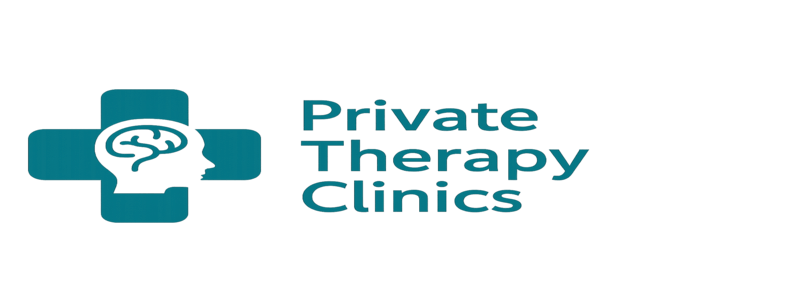
Emotional literacy feels subtly radical: it calls on us to stop viewing emotions as diversions and instead treat them as data that can be interpreted, used, and, when done well, can be generative. This way, the person across from you becomes less of a barrier and more of a collaborator in a shared endeavor, much like a conductor bringing harmony out of a diverse group.
Comparing artificial intelligence (AI) to a swarm of bees that efficiently buzz through data and patterns helps illustrate the point: while machines can map behavior, predict trends, and optimize processes, they are unable to identify the pain behind a colleague’s abrupt response or recognize when a patient’s silence indicates fear rather than compliance. As a result, emotional literacy is the human tool that remains beyond automation, surprisingly inexpensive to develop, and remarkably resilient in its output.
| Label | Information |
|---|---|
| Term | Emotional Literacy |
| Definition | The ability to recognise, understand, express and regulate one’s own emotions and to empathise with and respond appropriately to the emotions of others. https://www.theraplatform.com/blog/486/what-is-emotional-literacy?utm_source=chatgpt.com |
| Key components | Self-awareness; empathy; emotional regulation; emotional vocabulary; repairing emotional problems; emotional interactivity. |
| Why it matters now | As automation handles routine tasks and remote teams fragment communication, emotional literacy becomes the human differentiator for leadership, mental health and collaboration. |
| Impact sectors | Healthcare, education, corporate leadership, customer service, creative industries. |
| Practical steps | Naming emotions; pausing before reacting; active listening; structured 1:1s; feedback cycles; simple training integrated into teams. |
The prestige of technical skill still opens doors in today’s workplaces, but many careers stall when the social fabric breaks down. I have witnessed an average engineer become indispensable by simply being present, asking the right questions, and holding their team’s nervousness with calm curiosity—small acts that, when added up over months, create cultures that are noticeably better at retention and much faster at learning. I have also seen a brilliant developer repeatedly passed over for leadership because she lacked the language to translate frustration into constructive feedback.
Emotionally intelligent leaders don’t compromise on rigor for kindness; instead, they harvest a different kind of efficiency, guiding teams through ambiguity by being incredibly clear in their intent, naming emotions when needed, and inviting perspective while making decisive calls. This combination of decisiveness and empathy works remarkably well to avoid the trust debt that otherwise builds up when signals are ignored and issues fester.
The case for emotional literacy in mental health is equally strong: those who are able to recognize signs of creeping burnout, express them in a sentence or two, and then use coping mechanisms are less likely to experience a crisis, take extended leaves of absence, or act impulsively in ways that damage relationship capital. People who process their emotions rather than repress them become more resilient, lighter-hearted, and eventually more creative because emotions, when seen and used constructively, become sources of insight rather than distractions.
Diverse groups navigating cultural and communicative differences report calmer discussions, better concentration, and a greater willingness to take intellectual risks in classrooms that practice emotional vocabulary and reflective feedback. This is because students learn that discomfort is not a hazard to be avoided but rather material to be examined, shared, and worked through. When these competencies are consistently implemented, educational institutions see differentiated outcomes.
In practice, developing emotional literacy is simple and hands-on: begin by identifying your feelings in brief, straightforward sentences; practice taking a deep breath before reacting with intense emotion; in meetings, invite subtext by asking “what’s making this hard?” instead of automatically assigning blame; and plan one-on-one meetings as signal time rather than status time, asking about concerns rather than just deliverables—habits that, when repeated, turn reactive managers into coaching leaders and reactive teams into reflective ones.
The payoff is quantifiable. Human-centered firms are increasingly evaluating emotional competencies during hiring and promotion, incorporating feedback cycles that are purposefully structured to surface emotional dynamics rather than burying them under procedural rugs. This is because studies have shown a clear correlation between emotional competencies and professional success: people who are able to read emotions accurately and regulate them earn more, influence more, and maintain careers longer than those with similar technical ability but lower emotional skill.
The most resilient organizations are those that treat emotions as information to be translated into better work, not as anomalies to be medicated into silence. This cultural shift is, notably, one of the decade’s quieter revolutions. Public narratives, ranging from CEOs citing emotional awareness as a retention lever to elite athletes attributing mental training, reflect a larger cultural pivot: success is no longer merely a ledger of outputs but an orchestration of relationships.
However, emotional intelligence is still underappreciated in part because it is difficult to quantify; unlike test scores or certifications, it is relational, context-dependent, and slow to demonstrate its compound interest; training programs categorized as “soft skills” are frequently optional, underfunded, and misunderstood—until issues arise, at which point businesses spend money on procedures and tools that only address the symptoms, failing to measure and address the underlying interpersonal temperature.
To change that, organizations need to stop separating emotional competency into optional seminars and instead integrate it into daily operations: provide clear guidelines for feedback language to new hires; make psychological safety a quantifiable objective; train managers to ask probing, clarifying questions; and reward behavior that exemplifies stopping, naming, and repairing rather than just rewarding outputs that are readily apparent. These actions are very effective at maintaining institutional knowledge and are incredibly clear in communicating values.
Emotionally literate citizens are better able to recognize when an argument is about status, fear, or grief and respond with curiosity rather than escalation—practices that, if widely adopted, would significantly reduce polarization and make public discourse more reparative rather than predatory. The social dimension is also important because in digital life, brevity amplifies misinterpretation and public platforms reward outrage, creating cascades that erode mutual trust.
Anecdotally, I remember a small clinic where nurses started a daily, two-minute check-in ritual by simply naming how they were starting the shift. This small, deliberate practice, carried out without much fanfare, eliminated misunderstandings, significantly decreased morning friction, and created a more tranquil patient experience, proving that interventions don’t have to be elaborate to have a profoundly transformative effect.
The call is clear-cut and hopeful for individuals: devote time to learning the language of feeling, approach emotional practice as training rather than therapy, and incorporate basic habits into everyday tasks; for institutions, the directive is just as pragmatic: create organizational structures that safely display emotion, gauge its impact indirectly through engagement and retention, and recognize and reward leaders who embrace complexity without faltering.
By valuing emotional literacy as a cultural proposition, we reshape ambition, elevating those who sustain teams, mend ruptures, and cultivate the social intelligence that machines cannot replicate. In the years to come, these individuals will not only survive, but will also shape conversations, set agendas, and steer organizations through change with noticeably better results.

